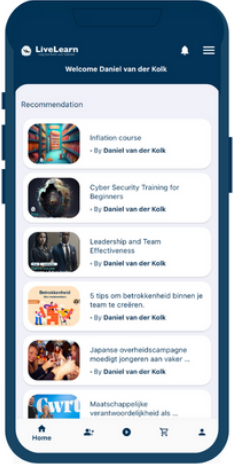
Artikel
29
May
Are Employees Quiet Quitting Due to Burnout?
Employee Disengagement, The Great Resignation, Bare-Minimum Monday, or Quiet Quitting—however it’s expressed, the trends are clear. “Tuning out” from your job is increasingly common. But except for TikTok personalities, it’s very hard to get anyone to speak honestly about it.
If, however, we can “peel back” the cognitive filters that prevent people from acknowledging their emotions and motivations, we might then provide a quantitative and qualitative picture of an employee’s emotional needs and motivations and the language and framework necessary to understand and communicate them. By conducting large-scale surveys representative of the entire American workforce via image-based emotional assessments, a never-before-seen view becomes available, spotlighting the emotional struggles associated with a variety of work-related issues such as working from home while caring for young children, being designated an “essential worker” during a pandemic, experiencing job burnout, and job (or quiet) quitting, among others.
The Great Resignation phenomenon
When reporting on the Great Resignation phenomenon, for example, it has been very common for journalists to conflate the desire to quit one’s job with the experience of burnout, concluding that job quitting is a product of burnout. A survey conducted by our firm, however, suggests otherwise.
In our research, more than one quarter (28 percent) of American workers reported symptoms of burnout, while one in five (21 percent) planned to quit. However, when these variables are examined jointly, most quitters were not burned out, and further, most of the actual burnouts did not intend to quit.
Clearly, these are not the same phenomenon. This finding begs the question of what is differential, below the surface, that leads workers to experience burnout or quit. The emotional results were profound.
Those workers who self-identified as burned-out, for example, were found to be significantly more likely to feel that their psychological safety is threatened and that they lack autonomy in their jobs, conditions that are far more specific and diagnostic than suggested by the label “burned out.” In my firm’s research model, the need for psychological safety and autonomy are both “foundational needs,” i.e., necessary for survival. Feeling safe and free to act are essential components of positive emotional well-being. Therefore, when these needs aren’t being met, it’s no surprise that workers exhibit signs of such emotional distress as anxiety and depression, both of which can signal “burnout” in the context of work.
Why employees quit
However, in sharp contrast, workers who plan to quit are motivated by a very different set of emotional needs, both of which exist at the intermediate and experiential levels (one step above foundational needs). The chief unmet emotional need that drives quitting is the desire for greater ethical conduct, specifically the need to reduce feelings of wrongdoing around them.
Work environments marked by office cliques, backstabbing, and dishonesty drive employees to quit. The need for a greater sense of caring is closely tied with the need for ethics. When employees perceive that their employer doesn’t sincerely care about them, they head for the exits. These conditions are also highly specific and diagnostic and suggest clear avenues for management action.
At their heart, these emotions are reactions to the social commitments made by employers. If an employee feels unsafe, untrusted, uncared for, or manipulated, these feelings signal a deficiency in the social commitments of the company, which, presumably, doesn’t care enough to ensure safety and autonomy in the workplace or fails to act to stop wrongdoing and/or falls to show that it cares. Social commitments, thus, are, in reality, the eons-old notion of the “social contract” between employers and employees. These must be built on a foundation of basic psychological safety, i.e., employees feeling trusted enough to act autonomously, feeling accepted, feeling included in the group, and witnessing good deeds being rewarded while bad deeds are punished.
These are the “table stakes” for the social contract. Without them, employees will be disengaged (like 60 percent of the world’s workforce today, according to Gallup’s most recent data) or actively disengaged (20 percent, which matches our survey’s figure for those intending to quit). Without these emotional foundations, there is little hope of employee engagement.
On the other hand, when foundational needs are met, the set of salient needs shifts upward to the experiential and aspirational levels. At the experiential level, we find the need for authenticity (bringing one’s whole self to work), immersion in one’s work, mutual caring, and ethical conduct. This is the level at which employers can effectively signal their support of their diverse workforces by celebrating Juneteenth and Pride, for example, or through emphasizing their charitable activities, sponsorships, and higher purpose.
Here, too, however, authenticity is key. Organizations that make symbolic gestures, such as placing a Pride flag on the company website, will only highlight their hypocrisy if their employees feel psychologically unsafe, shackled, excluded, or treated unfairly. To retain top talent, organizations must prioritize the foundational needs of their employees.
What's your reaction ?
Follow us on Social Media
Some Categories
Recent posts

December 18, 2025
KPI’s bepalen, monitoren en bijsturen: zo doe je dat

December 15, 2025
Hoogste Europese rechter bevestigt minimumloonrichtlijn EU-landen

December 09, 2025
Non-bancaire financiering: zó regel je dat

December 05, 2025
Deadline kleineondernemersregeling (KOR) 2026 nadert

December 01, 2025
Inzicht in je cijfers: zo haal je meer winst uit dezelfde omzet

 Inloggen
Inloggen
 Registreren
Registreren






Comments (0)
No reviews found
Add Comment